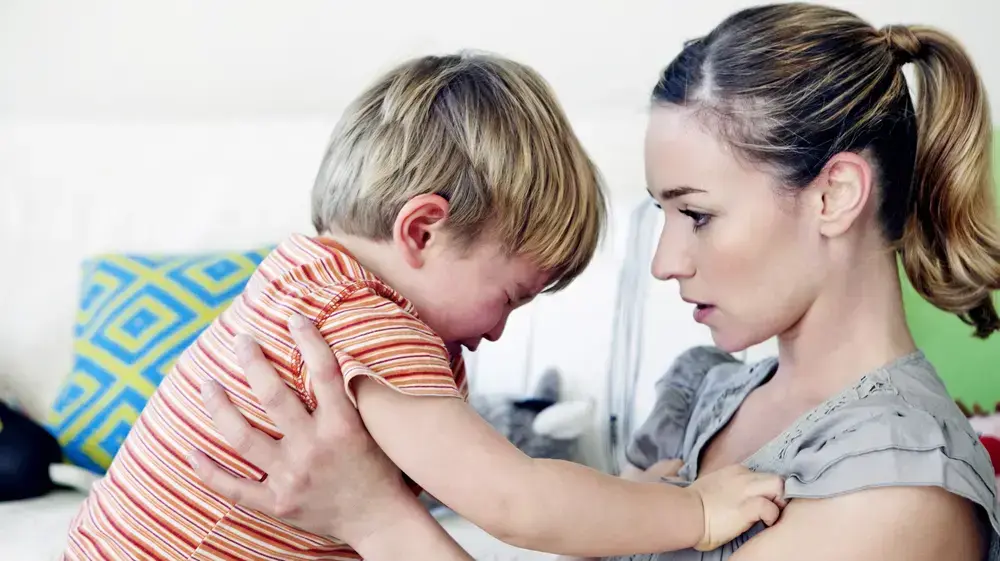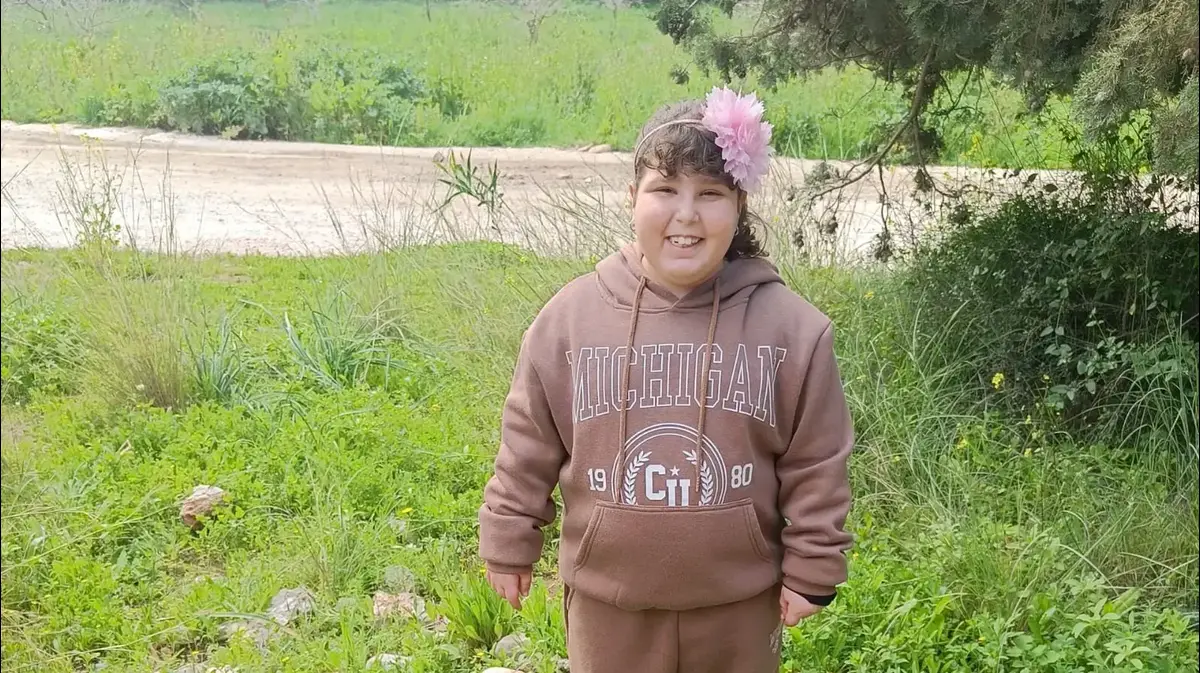health
parenthood
Do not ask your children to calm down if they have not learned how to do it
Your kids lose it, you lose it - and God forbid it comes back.
In many homes this vicious circle has become routine during the days of closure.
Unlike you, your children do not always know how to calm themselves.
But they can learn
Tags
parenthood
Clasp
Walla!
health
Sunday, February 14, 2021, 1:43 p.m.
Share on Facebook
Share on WhatsApp
Share on general
Share on general
Share on Twitter
Share on Email
0 comments
Do they have any ability at all to deal with the difficulty they are experiencing?
A crying child (Photo: ShutterStock)
"Enough! Stop crying! You've driving me crazy! Go to the room! Calm down, calm down!"
How many times have we found ourselves getting upset and demanding that they relax, stop the dramas and stop driving us crazy, especially in the last year?
Have we ever stopped to ask ourselves: Do they have the tools to relax on their own?
Do they really understand the situation they are in, or do they have the ability to deal with the difficulty they are experiencing?
Children are not born with these emotional insights, they need us to teach them to do so.
From the moment we go out into the world air we are on a journey of exploration and examination of the environment and of ourselves.
Some are more curious and some less so, but we are all trying to understand and learn the world we have reached.
In the early years children learn about the world mostly through their parents.
They learn the meaning of good and evil, right and wrong and especially what is allowed and what is forbidden.
Over the years they are exposed to more characters and slowly develop their self-identity according to what feels right to them.
how does it happen?
Most of the time by observing, imitating and examining different situations and significant figures along the way.
More on Walla!
NEWS
Just so I don 't have a fat kid
To the full article
To enable our children to form an independent and strong self-identity they need us to enrich their emotional toolbox, to better understand themselves and the world around them.
The emotional toolbox has 3 main tools:
1. Learn to relax
Did we really teach them to relax?
Regulate the emotions that suddenly arise and understand that even if it is very difficult at the moment, I have the ability to understand that difficulty or an unpleasant feeling usually passes.
This is not a simple learning that requires us first of all to stay away and pause our response.
Do not rush to do for them, but allow them to learn and recognize their abilities.
We will not do anything to stop crying and frustration, we will not try to distract them so that we do not have to contain their difficulty and especially give them options to calm down when we are next to them - calm and restrained (they learn best from seeing us).
Give them the time they need to calm down from crying, and when that happens - praise them for it.
Mother tries to work and toddler cries in the background (Photo: ShutterStock)
We will explain to them that they can breathe deeply and show them how to breathe, we can offer them to drink water, get a hug, count in the heart, go to the room to be a little alone and relax, wash face or share what is bothering.
As long as we do not feel sorry for them but stop for a moment, contain the situation and the difficulty and stay calm, we can teach them something about their strengths and their ability to cope even if not always simple for them.
In order for us to be able to produce internalization and assimilation of the tool, we will not put a stopwatch on the crying time.
Give them as much as they need until they can relax and when that happens you can praise them for it ("What a beauty you were able to relax").
That way they will gain a significant tool for life and we will gain independent and calmer children who are not scared of themselves.
In the end, we also allowed them to learn and also strengthened their self-confidence and recognition of their abilities.
2. Recognize another
Most children are not born with the ability to share, share or even acknowledge the desires of the other.
They learn this over time, under our guidance, and through different situations that challenge them.
This is the way of life and it is important that we are not frightened of it or them.
At young ages children do not experience rejection as we experience it.
Teach your children to recognize the other by not giving up on yourself in front of them and by not giving in to them in front of the other, even if it is difficult for them.
Help them understand that even if they wait a bit a donor will come and once they share the others will share with them back.
This is the way of the world and so it will be easier for them to get along in the world in which they live.
Even if it sometimes requires moving away from the situation that there is no ability to deal with or even go home.
Do not give up on them in front of the other, even if it is difficult for them.
Mother soothes child cries (Photo: ShutterStock)
Learning is much more important than the point moment itself.
Do not be afraid of reactions or difficulty, restraint and calmness are just as important here.
Start with learning according to cognitive understanding.
In the verbal stage but also in the pre-verbal stages.
The more we talk about things but also do and act - there will be internalization and learning.
Friendship and closeness are significant at all stages of life and our little ones should be given tools on how to produce them and it is never too early to start.
3. Release
Childish thinking, especially in early childhood, is very patterned and fixed.
This is natural and does not indicate a problem, except in exceptional cases.
Most children at these ages tend to be difficult with themselves and their environment and they need things to be exactly as they want and think.
It comes from the basic need to create a sense of security by controlling.
Although this childish thinking is so typical we can help them release, making it easier for them to contain and deal with reality.
We do this by teaching them the difference between 'want' and 'need', it seems to them that they are also complete with their difficulties and disappointments.
We will contain them and not give them the feeling that if they are sad or angry we are scared of them, but there are strong and calm, so even if very difficult now they have the ability to let go.
For example, when the toy does not exactly go in the way they want and the Bamba bag does not open exactly as they wanted ... it seems to them that we understand, that it really sucks that things do not always work out the way they wanted but this is the situation and you can always look at it in a positive light. You can try and try until we succeed at the end of the game.
Teach them that they are whole even with their difficulties and disappointments.
Mother and child in a messy living room (Photo: ShutterStock)
More on Walla!
NEWS
This simple operation will make it easier for parents and children at home
This article will help you understand that good things happened in your home in Corona as well
20% of autism cases are caused by antibodies.
This test can detect them
70,000 people are not wrong: the treatment of knee and back pain is recognized by all HMOs
Here, too, calmness and restraint in the face of their reactions will allow us to teach them how to perceive the situation better, even when we are not the most bastards. If possible also try to introduce humor and playfulness "What a confused bamba what does she think of herself?" Or "this toy never wants to get by what he thinks to himself" it will help them feel that you are with them and release better.
The basis for all the tools given to them begins with our ability not to panic about the situation, not to panic about them and most importantly not to panic about ourselves. We have the abilities to teach them a lot according to age, according to themselves. Children are like plasticine. They have come to a world that is new to them and they need guidance and guidance from us to produce for them a journey that is right for them. The more we equip them with practical and emotional tools, the better they will be able to choose their own path, in the way that is right for them. So invest in clear boundaries and habits like brushing teeth, dressing alone, sleeping well and not raising a hand, but do not neglect the emotional tools either - the ability to regulate, the ability to recognize another and deal with reality in a better and more liberating way. All of these will serve them and make them more independent. Those with the powers to overcome and the understanding that nothing stands in their way, knowing that they have a real back that will not be frightened of them. Because after all if we believe in them they will believe in themselves, that's how it works.
Chen Katz is a social worker, expert in parenting and sleep
Share on Facebook
Share on WhatsApp
Share on general
Share on general
Share on Twitter
Share on Email
0 comments




/cloudfront-eu-central-1.images.arcpublishing.com/prisa/UWHJHRS76BDGXKJHHRKPY5HL7U.jpg)










